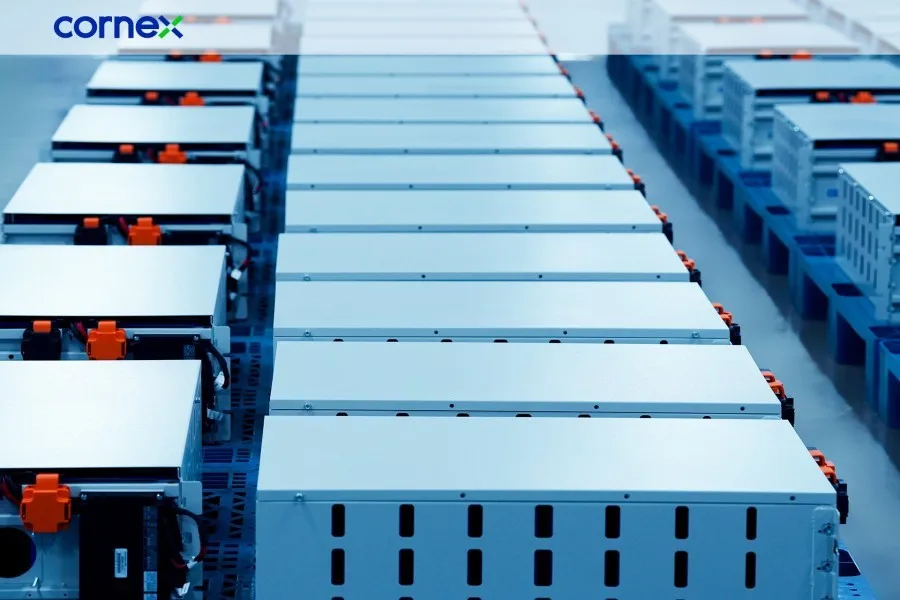A brief discussion on LG Energy Solution’s abandonment of prismatic cell research and development.
Table of Contents
Cell development and management
Three types of cells: similar origins with different functionalities
Battery manufacturers: the development of multiple technical routes
Technology routes: complementing and competing
Conclusion
Cell development and management
According to Korean media outlet The Elec (September 14), LG Energy Solution has announced the cancellation of their prismatic cell developments, instead focusing on the production of pouch cells.
Based on packaging form, lithium batteries are predominantly divided into pouch cells, cylindrical cells, and prismatic cells. These three options have formed a certain scale in the market, but will LG Energy Solution’s move lead to changes in the industry layout?
Three types of cells: similar origins with different functionalities
Pouch cells, cylindrical cells, and prismatic cells were all developed from 3C battery technologies but their characteristics differ depending on the structure.
The jellyroll of the pouch cell is covered with a structure similar to that of the aluminum-plastic film wrap found on the pole pieces. Due to this soft structure, this cell took the name “pouch cell.” The pouch cell has the characteristics of high energy density and excellent heat dissipation performance.
The cylindrical cell’s name comes from the rolling of the jellyroll into a column, where the outside is equipped with a cylindrical steel or aluminum shell. This cylindrical cell has the characteristics of small size and high production efficiency.
The prismatic cell is the most widely used battery cell type in lithium-based electricity. It is wrapped by a rectangular aluminum shell, has a built-in battery pack, is filled with electrolytes, and is sealed with a top cover to form a relatively independent electrochemical unit.
After nearly ten years of development, the technical direction of these three cells has become increasingly clear.
The pouch cell offers inherent advantages in mass and energy density and is constantly breaking limits. Currently, the research and development direction for this cell is to solve a series of problems caused by gas production inside the battery cell.
The cylindrical cell offers an increasingly growing diameter and cell capacity. Starting from the original 18650 (diameter 18mm), it then progressed to the 21700, then to the later 34 series, and now to the popular 4680.
The prismatic cell’s structural advantages are coming to light thanks to continuous progress in material research and development. The traditional steel shell has been replaced by a high-strength aluminum shell, which takes the mass-energy density to a higher level. Developments in laser welding technology have also solved the issue of welding strength between the shell and the top cover. Additionally, the birth of laminations and cathode tab side-out technology has meant breakthroughs in the challenges facing space utilization.
All the “gimmick” products launched by battery factories in recent years –whether thinking of the “blade” battery, “magazine” battery, or “Kirin” battery–, the basis has always been the prismatic cell. This has been reflected in the EV battery market, which showed that the prismatic batteries installed in 2021 reached 121GWh, accounting for 81% (from CITIC Securities 2021 EV battery market report data).

Battery manufacturers: the development of multiple technical routes
Each battery enterprise chooses a technical route during the initial planning. For example, Panasonic’s cylindrical cell route originated from its successful application of the 18650 cells in laptops and the subsequent technology advancements that came with it. BYD’s prismatic aluminum casing route is related to its use of OEM batteries for Nokia.
However, with ongoing research and the development of new technologies, as well as changes in market supply and demand patterns, the vast majority of battery manufacturers will now develop multiple technical routes:
- As the largest supplier of cylindrical cells, Panasonic has started researching and developing prismatic aluminum cells at its Dalian factory;
- LG Energy Solution is known for its pouch cells, however, its cylindrical cells are also excellent;
- Samsung’s EV batteries are known for their prismatic aluminum cells, however, mass production of the 21700 cylindrical cells has already begun at its Tianjin factory;
- CATL is deploying a series of large cylinders and has also partnered with BMW, which is expected to start supplying the 46 series cylindrical cell in 2025.
Alongside developing multiple technical routes, battery enterprises will combine and amend their battery cell characteristics to improve and upgrade their products, or use non-technical methods to maintain their strengths.

Technology routes: complementing and competing
The choice of technology route mainly depends on the technology’s developments and the speed with which updates can be achieved. The choice of development direction mainly depends on the following factors:
- Technical innovation: In the event of no breakthrough innovations within any one technical route, the pouch cells, cylindrical cells, and prismatic cells will all be simultaneously developed to realize performance and cost improvements, according to their characteristics.
- Leading enterprises: Thanks to their capital and adequate technological capabilities, the leading companies can influence the industry and so avoid their shortcomings. So far, the leading enterprises have chosen more than one technology route, which means the three technology routes will occupy their respective market shares for the foreseeable future.
- Market changes: The current domination of the domestic market by prismatic aluminum cells is unlikely to change in the next few years. However, the launch of the 4680 battery provides new growth momentum for the development of the cylindrical cell, while the pouch cells are now gaining popularity in some overseas markets.
Conclusion
The rise in popularity of both cylindrical and pouch cells means the competition between the prismatic cell and pouch cell is still uncertain. As for LG Energy Solution’s choice to continue on the pouch cell route and abandon the research and development of the prismatic cell, this could be due to their already large investments in the pouch cell and the already achieved technological advancements in the prismatic cell by Chinese battery enterprises over the past ten years.
Disclaimer: The information set forth above is provided by Cornex New Energy independently of Alibaba.com. Alibaba.com makes no representation and warranties as to the quality and reliability of the seller and products.




